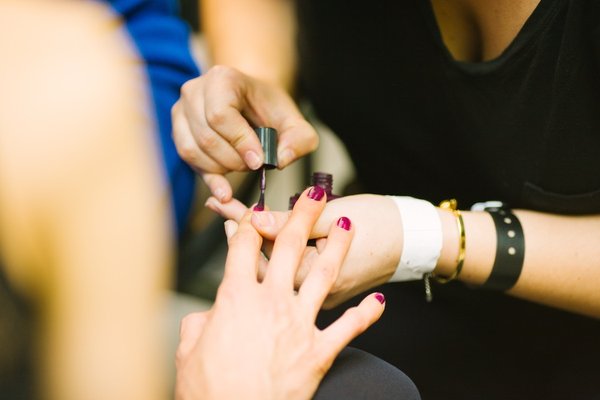If you love to treat yourself to a manicure or pedicure from time to time, then you’re acutely aware of the pungent, chemical-y smell that immediately hits your nostrils upon entering the salon. It smells like vats of nail polish were left open for years in most nail salons.
What most people don’t think about, while they’re being pampered, is that you’re breathing all of those chemicals during your visit. Worse yet, staffers are breathing it all day, every day.
A new study published in the journal Environmental Pollution took a more in-depth look at these chemicals, including volatile organic compounds (VOCs) — which include formaldehyde — common ingredients in nail products.
RELATED READ: Turns out, the chemicals in sunscreen do seep into the bloodstream
The goal of the study, according to researchers at the University of Colorado – Boulder, was to provide evidence for the serious health risks facing workers in the nail salon industry, who commonly experience symptoms including headaches, respiratory problems and skin irritation.
"The study provides some of the first hard evidence that these environments are dangerous for workers and that better policies need to be enacted to protect them," said Lupita Montoya, lead author of the research and a research associate at CU Boulder.
Health concerns surrounding nail salon chemicals have been documented for over a decade, but this study is the first to identify a causal relationship.
Montoya and her research team monitored six Colorado nail salons over an 18-month period, keeping track of VOC levels — including benzene, which has been linked to leukemia. All salons had high levels of benzene, the study indicated.
The research team was most concerned with the industry workers who, according to a self-reported questionnaire given to the six salons' staff, work an average of 52.5 hours per week, though some reported working up to 80 hours weekly. Further, 70 percent reportedly experienced at least one adverse symptom — including headaches, skin irritation or eye irritation.
Further, researchers found that the salon workers face up to a 100 times higher lifetime cancer risk, the release explains.
The lingering question you may have is: What about the customers? Well, according to the researchers, customer face a significantly less risk — aside from vulnerable populations like pregnant women and those with asthma.
Montoya has been working mechanical engineer and Ph.D. candidate Aaron Lamplugh on methods to reduce VOC concentrations passively, including using:
Absorbent materials like heat-treated coal or wood with strong affinity for organic molecules like BTEX compounds. These activated carbon materials can remove harmful VOCs through passive diffusion, but it takes a long time. Air jets that direct polluted air toward the absorbent material with greater flow provide far more efficient removal.
"These materials can be beautiful, affordable and effective," Montoya said.


